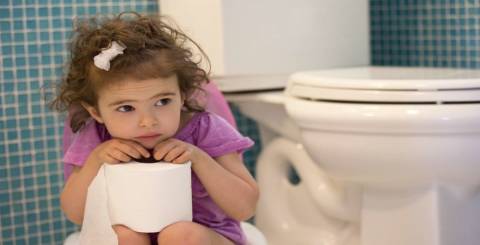Tips for Toilet Training a Child with Autism

It is completely up to the parents to decide when to toilet train their child. These days, people have become more relaxed when it comes to seeing older kids in diapers, but there will always be those who continue to judge silently. Things get tougher when you have an autistic child because they will not be able to master toilet training until they are a bit older. Parents should understand that there are two components that can slow down the toilet training process in children with autism. First, these kids will have trouble comprehending social cues so they are unable to understand why it is such a big deal.
Secondly, toilet training means a major change in their regular routine that brings new sensory experiences and this is also a struggle for children with autism. If you are wondering how to get started, here is a potty training guide for autistic child:
1. Check for readiness
First and foremost, you need to be sure that your autistic child is ready to be toilet trained. How can you know that? There are a few signs that will tell you. You can consider them ready to be trained when they have well-formed and predictable bowel movements, show interest in the bathroom habits of other people, get fussy when they have a wet or soiled diaper or ask to be changed, can pull up their pants or diaper or show awareness about need to eliminate like going into the corner or hiding when eliminating.
2. Have a plan
Most children with autism thrive on routine and structure. You need to keep track of their elimination habits. How long are they able to stay dry between diaper changes? Do they have regular bowel movements? Make sure everything in the bathroom is within easy reach. Some adaptations may have to be made for keeping them distracted like toys or books. Come up with a bathroom routine and perform it every time you take them to the toilet so they know what to expect.
3. Make a picture chart
A number of autistic children process things better visually instead of listening. Therefore, it is a good idea to visual of your bathroom routine. Make sure you have pictures of every step like going to the bathroom, taking down pants, sitting on the toilet seat, using tissues and flushing the toilet etc. Show them the pictures every time to ensure they are able to process it.
4. Leave the bathroom door open
It is a fact that children learn best by imitation and this also applies to autistic children. If any family members are comfortable with the idea, allow your autistic child to see others use the bathroom. If no one is willing, you can show them a video to help them understand.
5. Time to get started
Select a distraction-free time and get started. When you think it is time for your child to wet their diaper, show them the visual and take them to the bathroom. Keep on showing the physical cues for every step. Over time, when they are ready, your child will not need these cues and you will be able to encourage independence.
6. Celebrate successes
You need to reward yourself as well as your child for every small success. It is a big deal for both of you and you need to remember that it is a marathon and not a sprint. Some days, it will be easy and some days you will have to start from scratch.
With time, you will be able to toilet train your autistic child successfully.
Similar Articles
Ever feel like your mind is working against you constantly in overdrive or stuck in a loop of stress and anxiety?
Choosing the right therapy method can be overwhelming, especially with so many options available today.
In today’s fast-paced world, prioritizing health has never been more important. With increasing access to healthcare programs, individuals can take charge of their well-being, prevent chronic diseases, and promote a longer, healthier life.
Have you considered how remote work affects your mental health? While it offers flexibility, it also brings challenges like isolation, blurred work-life boundaries, and the pressure of managing a flexible schedule, which can impact your emotional well-being.
Seasonal fall allergies are a common problem among people because the sudden change in weather may bring in some allergic reactions. During this time of the year, allergens such as weed pollen, mold spores caused by dampened leaves, and dust mites within homes begin to appear.
Explore how IoT healthcare services are transforming patient care with real-time monitoring, personalized treatments, early detection, and improved telehealth access.
Healthcare facilities provide two types of medical services, i.e. OPD and IPD, where OPD stands for Out Patient Department and IPD stands for In-Patient Department. OPD is a healthcare facility, where patients get medical consultations, diagnosis and treatment within the hospital
Living with any type of disability can often be a challenge while if you are looking for an innovative way to improve your health and well-being, then booking an appointment with an occupational therapist in your local area could just be the solution that you have been looking for.
Discover when your doctor may recommend a hormonal imbalance test to address symptoms like fatigue, weight issues, mood swings, sleep problems, and more.









